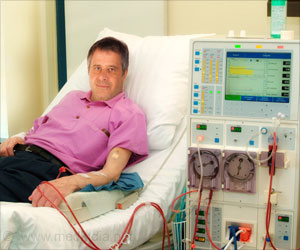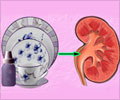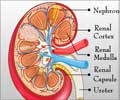Scientists have identified new treatment for a common complication of hemodialysis.

‘Nearly 2.5 million patients worldwide regularly undergo hemodialysis, according to the European Renal Care Provider Association.’





Hemodialysis fistulas frequently become blocked and stop working. This has traditionally been treated by either inserting a stent to keep the fistula open, or by standard angioplasty, in which a tiny balloon is threaded through the blood vessel and then expanded to force the fistula open. Both procedures are commonly used, but in many cases, they only are able to keep the vessel open for a few months. "Patients with this debilitating disease frequently require multiple visits to the hospital for treatment and face a life-long battle to maintain their access point used for dialysis," said Robert A. Lookstein, MD, MHCDL, Professor of Radiology, and Surgery, at the Icahn School of Medicine at Mount Sinai and Executive Vice Chair of Diagnostic, Molecular, and Interventional Radiology at Mount Sinai Health System, who led the international team of investigators. "The access points often become blocked or damaged and unable to be used, requiring multiple procedures or interventions to restore the function of the access."
In this prospective, randomized trial (IN.PACT AV, Medtronic access study), 170 subjects were assigned to receive treatment with a drug-coated balloon and 160 were assigned to receive treatment with a standard balloon. Patients who received the drug-coated balloon were 25 percent more likely to still have a functioning access point after 6 months, compared to those receiving the standard balloon treatment. In addition, the number of procedures required to maintain the opening was decreased by over 50 percent for those who received the drug coated balloon.
"This treatment has the potential to offer patients with end-stage renal disease continuous hemodialysis, avoiding unnecessary procedures and surgeries which can dramatically affect patients over the course of their lives. This is a game changer for patients who are often tethered to a health care facility for treatment and maintenance of a poorly functioning dialysis access. If we can reduce the number of interventions and keep these patients out of the hospital, we can dramatically improve their quality of life," said Dr. Lookstein.
Source-Eurekalert










